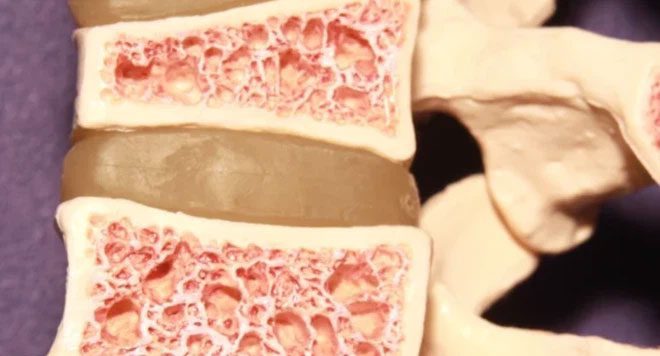The bone density of this patient is eight times greater than that of a normal person. This does not cause any issues for the patient except for the fact that they cannot suffer from fractures.
In 1994, a man was involved in a car accident. X-ray images showed no damage to his bones or spine, but the doctors noticed that his bones were extremely dense. When he was transferred to the Yale Musculoskeletal Center for examination, director Karl Insogna discovered that the bone density of this patient was eight times greater than that of a normal person. Yet, this did not cause any problems for the patient.

The mutation on chromosome 11 known as LRP5 can make bones stronger.
Six years later, Insogna happened to meet a doctor experienced in treating a family whose members all had super-dense bones. After researching the family tree, Insogna discovered that his former patient was also a member of this family.
This case opened the door to a study conducted by multiple groups of scientists, leading to significant findings about the genetic mutation on chromosome 11 called LRP5. Initially, this chromosome was associated with osteoporosis, but in new trials, Insogna and his colleagues concluded that LRP5 could also make bones stronger.
At the same time, scientists in Nebraska were also studying 21 members of another family with similarly dense bones. “These individuals, regardless of age from 3 to 93, have never experienced a fracture,” said Mark Johnson, the lead researcher at Creighton University in Omaha.
The team discovered a connection between LRP5 and the regulation of bone density, which is crucial for body development. The LRP5 mutation can lead to two different bone conditions, depending on whether it causes decreased or increased bone synthesis activity, resulting in either osteoporosis or sclerosteosis – a condition of super-dense bones that cannot break. Individuals with this gene mutation can easily replace old bone or regenerate bone.

In addition to having super-dense bones, individuals with sclerosteosis often have unusual square jaws, deformed bones in the palate, and some may be unable to float on water.
You cannot have this superpower without sacrificing something else. The uncontrolled growth of bones can compress nerves and increase pressure on the brain, leading to issues with hearing, vision, touch, or mobility.
The discovery of the LRP5 mutation brings hope for treating osteoporosis, a condition where bones become brittle and prone to fractures, or osteopetrosis, which often occurs in children with dense bones that are very fragile.
In the case of sclerosteosis, a fundamental protein is deficient in the body, leading to uncontrolled bone growth, while in osteoporosis, this protein is overly active, causing new bone formation to fail to keep up with the bone loss regulated by this protein. To find ways to mitigate the effects of this protein, scientists have developed an antibody that can inhibit this protein in osteoporosis patients. The result is the Romosozumab medication, the first osteoporosis treatment to be introduced since 2010.
Although the man from 1994 did not benefit from this new medication, he played a significant role in the discovery of the LRP5 mutation, leading to the invention of Romosozumab, which helps treat millions of osteoporosis patients. That is why he is considered a hero with superpowers.


















































